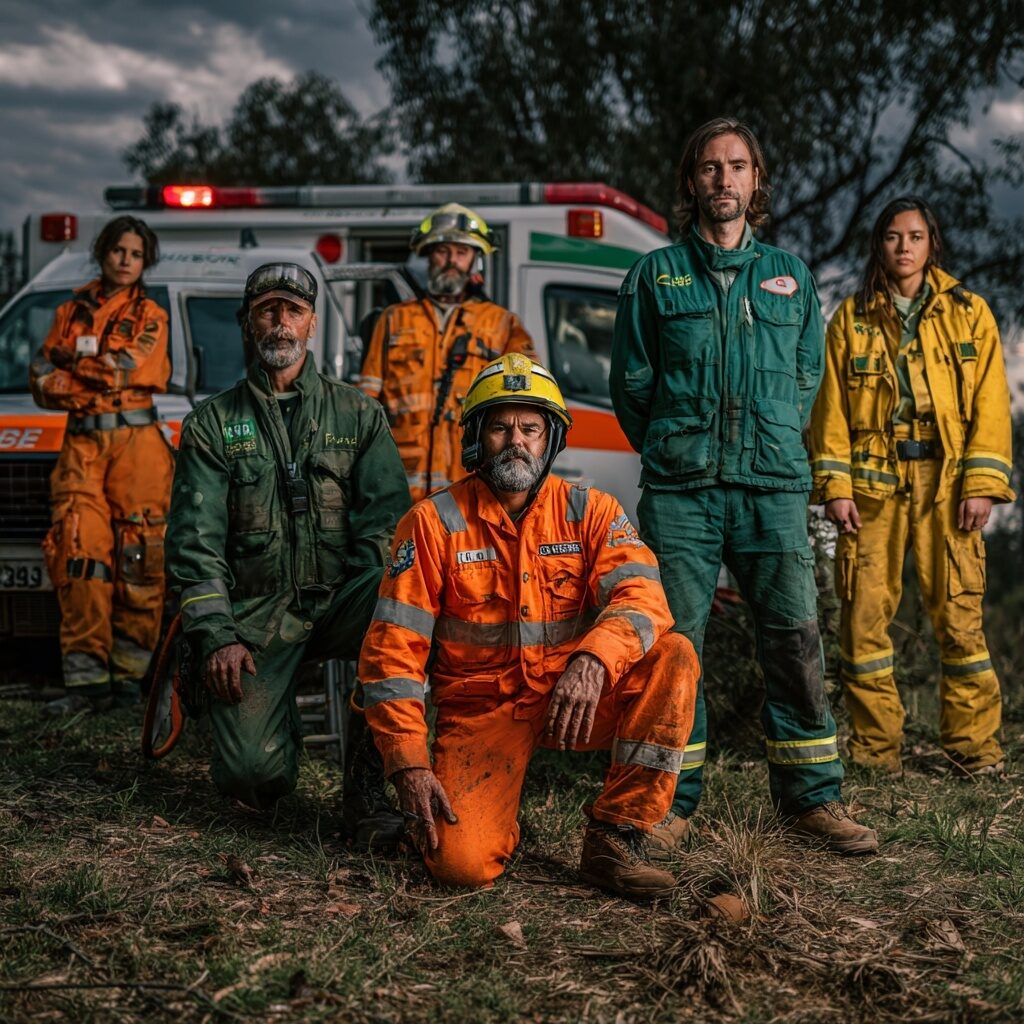Basic first aid in a wildfire. Immediate and correct action during a wildfire can make the difference between life and death. Knowing basic first aid in wildfires is essential for firefighters, support personnel, and civilians who may be caught off guard by advancing flames. At ISK Fire Survival, specialists in self-protection and survival in extreme environments, we know that preparation and knowledge save lives.
Assess the situation before acting
Before providing first aid, it is crucial to evaluate the safety of the area. Never attempt to help if the scene is not secure. Wildfires can shift direction rapidly, so identifying escape routes and safe zones must be the first priority. Wildland firefighters recommend sheltering in already burned areas or places with minimal vegetation and maintaining constant communication with the team.
First aid for burns
Burns are among the most common injuries in wildfires. They are classified as mild, moderate, or severe depending on their depth and extent.
- For minor burns, cool the affected area with clean (never ice-cold) water for at least 10 minutes.
- For severe burns, do not remove clothing stuck to the skin or apply ointments. Cover the area with a sterile dressing and seek immediate medical assistance.
- If there is evidence of smoke inhalation, urgent evacuation is critical.
ISK’s fire shelters, such as the FS2 Collective Shelter, are designed to reduce thermal risk and provide protection against radiant and convective heat, allowing crews to survive extreme conditions while awaiting rescue.
Smoke inhalation and breathing difficulty. Basic first aid in a wildfire
Inhalation of toxic gases is a frequent cause of injury in wildfires. Symptoms include coughing, shortness of breath, dizziness, or loss of consciousness. In these cases:
- Move the person away from the affected area.
- Loosen clothing and ensure they can breathe freely.
- If unconscious but breathing, place them in the recovery position.
- If not breathing, begin CPR (cardiopulmonary resuscitation) until help arrives.
Integrated breathable air systems, such as those found in ISK’s FS2 shelter, can be decisive in maintaining oxygenation during entrapment situations.
Heat stroke and dehydration. Basic first aid in a wildfire
Extreme heat, combined with dehydration and physical exertion, can lead to heat stroke. Symptoms include hot skin, confusion, dizziness, and loss of coordination.
- Move the affected person to a shaded area.
- Remove excess clothing and apply cool compresses.
- Give small sips of water if they are conscious.
ISK equipment integrates thermal protection systems such as the FS4.1 fire skirt and FS5 fire-resistant curtains, which help maintain safer internal temperatures during extended exposure.
In wildfires, the best form of aid is prevention. Training in first aid and having certified equipment such as the ISK Integral Safety Kit significantly increases survival rates in hostile environments. Self-protection is not optional — it is essential.
